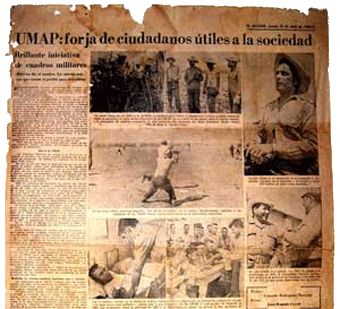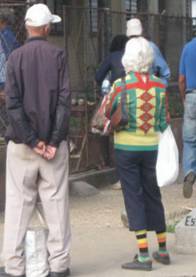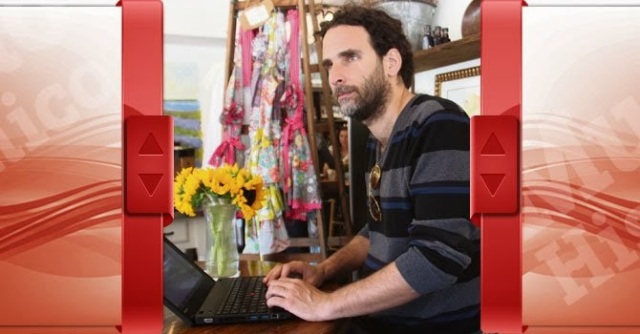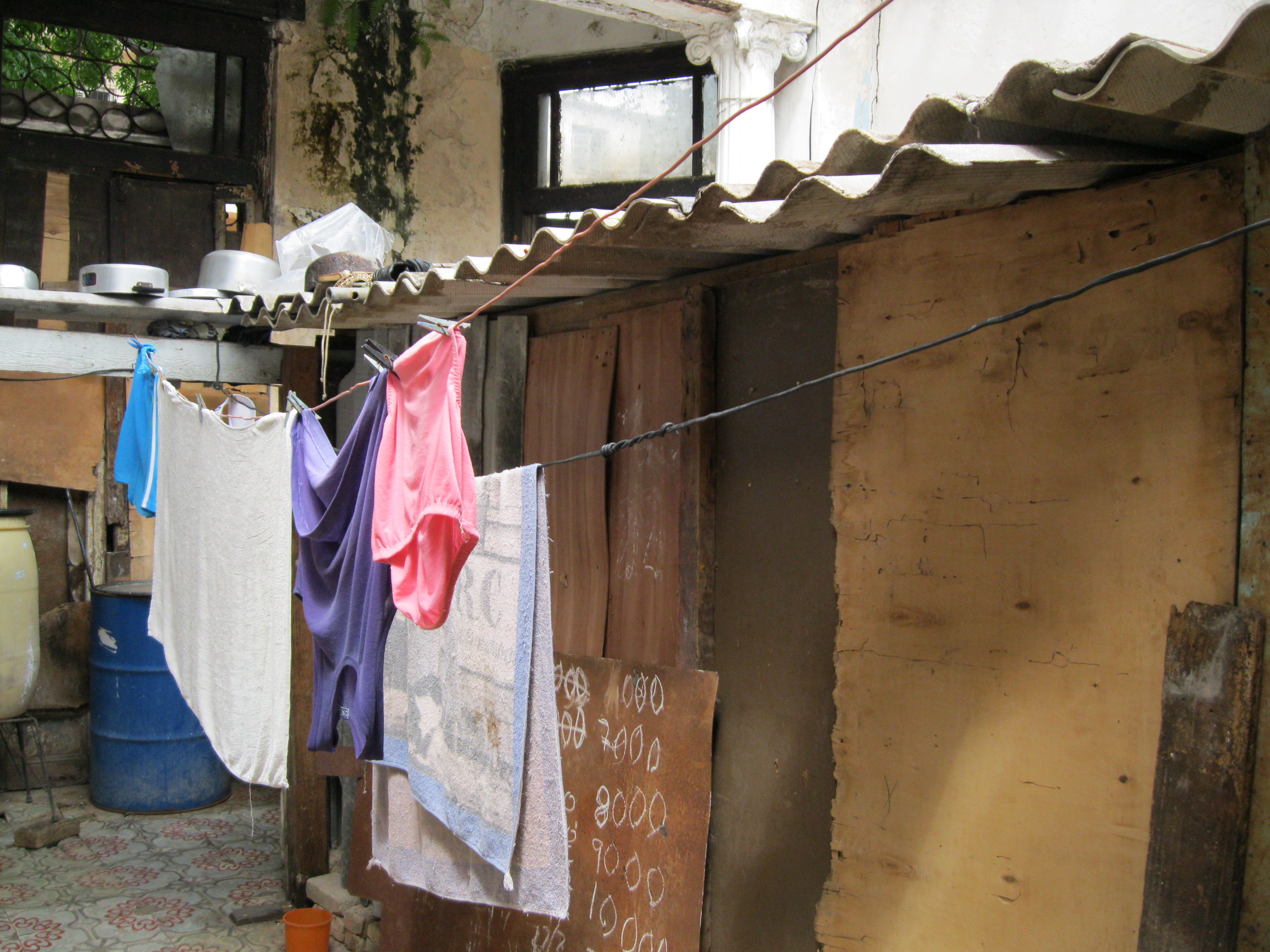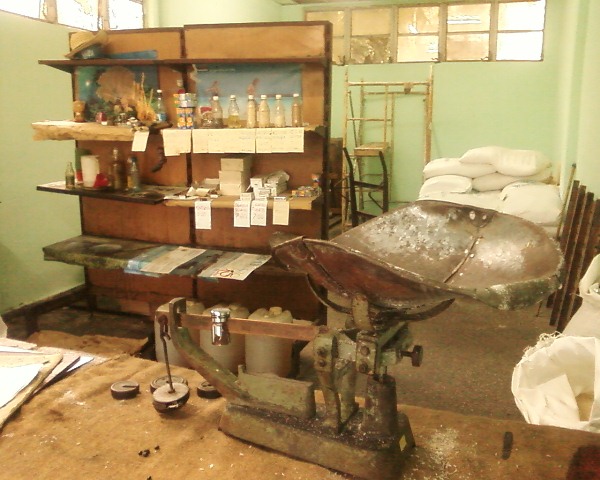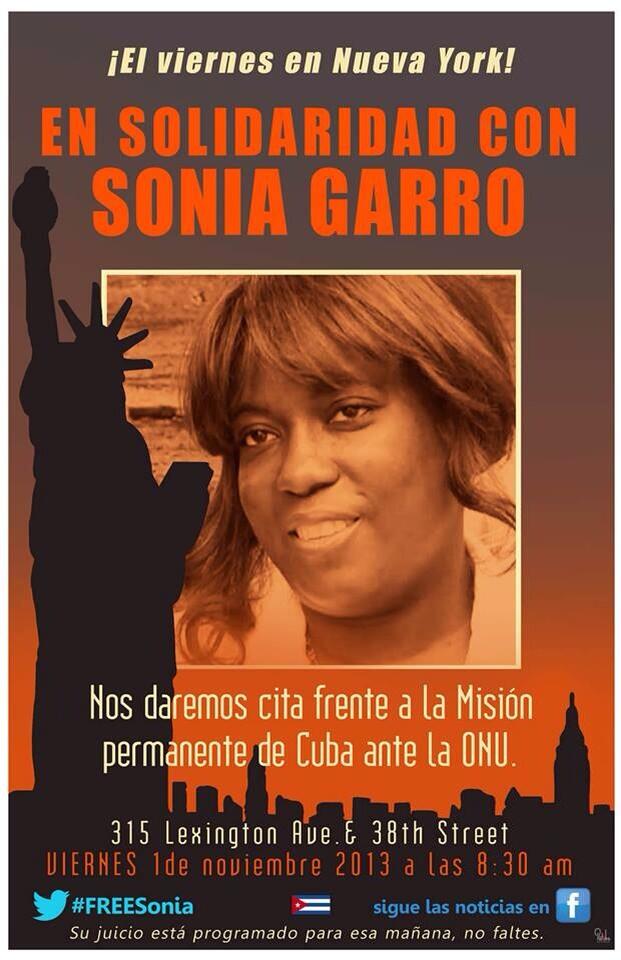Halloween and Proletkultura / Regina Coyula
The appearance of witches, pumpkins and black cats in private businesses has been striking; at the Adrenaline 3D home-based theater, which is close to home, there was a midnight costume contest.
It seems that such a fervor for the Halloween festival has set off the critical eye of officialdom. The foreign character of its origin, its highly commercialized content, and, finally, its impact on the family pocketbook, are all mentioned in the work of the journalist Raul Menchaca of Radio Reloj.
We have made foreign traditions Cuban, confining ourselves to the most genuine, throwing ourselves wholeheartedly into areíto and la cohoba. The journalist is either very young or has a very bad memory, because “tradition” was also carrying the bride’s bouquet to the bust of Mella in front of the University, a tradition that came and went along with the shout “hooray!” with knee to the ground for our young people when those massive graduations were held at the Plaza of the Revolution, and some other Slavic tradition I’ve forgotten.
He also suffers amnesia over the very recent American tradition of yellow ribbons, which, unlike this night of the witches, was promoted, financed and imposed by the government.
The mentioned journalist appeals to our idiosyncrasy to discredit a private initiative that surely doesn’t affect the pockets of the “affecteds.” A personal decision that is attacked, as I see it, because it corresponds to that expanding sector of things which are not dependent on the State, and one bad idea brings another, and another, and one more after that, and when you see where it’s going…
1 November 2013
Yoani Sanchez at Stanford University
[The following is from Stanford University, originally in English]
November 1, 2013 – Program on Liberation Technology In the News
Cuban blogger uses technology to break information blockade
By Sarina A. Beges
On October 28, Cuban blogger and dissident Yoani Sánchez addressed a crowd of over 100 during a special event hosted by the Program on Liberation Technology at Stanford’s Center on Democracy, Development, and the Rule of Law. Sánchez described to the audience – through the use of a translator – how technology allows her to narrate the harsh realities of the closed island nation of Cuba to the world.
From the computer she constructed with spare parts in 1994 named “my little Frankenstein” to her Twitter account with over half a million followers today, Sánchez illustrated how technology is an ally for information and freedom in Cuba.
Sánchez described the launch of her blog – Generation Y – as a turning point for her life. Generation Y became an outlet for her to unleash her own personal “demons” through the written word while providing a more realistic portrait of Cuba to the international community.
“The greatest gratification has been to see how that small crack that started in 2007 has turned into a window through which many more Cuban activists and ordinary Cuban citizens can now express opinions,” said Sánchez when describing the impact of Generation Y.
Since that time, Sánchez has gained international acclaim for Generation Y – which is translated into 17 languages – and has received many accolades, including a 2012 nomination for the Nobel Peace Prize and recognition by U.S. President Barack Obama.
Sánchez, who received permission to leave Cuba for this trip, was in the San Francisco Bay Area meeting with technology giants – Google, Facebook and Twitter – to discuss the challenges of using technology in a country that restricts Internet usage and social media access for the majority of the population.
In a climate of control, the demand for information is high and Sánchez described the incredible clandestine network of information exchange in Cuba where terabytes of data are shared through flash drives. The black market for information has helped bloggers and civil society activists reach an international audience with their messages.
“The day in Cuba when there is political change , I expect there to be monuments raised not to men who fought with weapons and machetes, but in the shape of a USB drive … or in the shape of a little blue Twitter bird in Havana,” said Sánchez, emphasizing the important role that technology tools have played in the struggle for freedom.
Audience members engaged Sánchez in a series of questions about the political situation in Cuba, curious about her position on the U.S. economic embargo, Raul Castro’s new policies and the Cuban exile community. Her responses provided a new narrative and perspective on long-standing issues that have defined U.S. – Cuban relations.
Sánchez closed her talk on a somber note, discussing how the life of the nation is linked to the fate of a single man.
“My mother was born under the Castro’s, I was born under the Castro’s, my son who is 18 years old was born under the Castro’s – that is three generations,” said Sánchez. “If the system is prolonged several more years my grandchildren may be born under this regime.”
While it is unclear what the future holds for Cuba, Sánchez’s talk reminded the audience that technology is helping to slowly chip away at the information blockade in Cuba, giving people the tools to be more free.
This talk was co-sponsored by the Association for Liberation Technology, the Center for Latin American Studies and the Stanford Human Rights Center.
To view the picture slideshow from the talk, please click here.
Prison Diary LXIII: It’s Not Feeding Revenge, It’s Saving Embarrassment / Angel Santiesteban
Dictatorships, according to the analysts, mutate to make threats disappear when their totalitarian power is threatened; to manage it, they are capable of acting against themselves. Nothing is worth more than the Government and its remaining in power as omnipotent beings.
Hitler, for all his ravings, lacked foresight into the future, which was overshadowed by his unbridled ambition; given the historic circumstances he didn’t have the opportunity to manipulate his environment. I always wonder if in order to save his position as Chancellor of the Third Reich he would have been capable of giving space in the media to the Jews themselves, whom he persecuted with intentions of exterminating them.
Instead, this is what we have seen in over half a century of Cuban dictatorship. To those who persecuted as the worst example of a sick society: homosexuals were expelled from their workplaces, universities, locked in concentration camps: Military Units to Aid Production (UMAP), removed from their jobs in theaters, publishing, television, university — at that famous stage of the “parameterization*” — and they then relocated them as punishment for their sexual orientation in places where they were not visible.
The story of the writer Antón Arrufat is famous, today a winner of the National Literature Prize, they put him to sorting books in the Enrique José Varona library in Marianao, directed by Silvia Gil, the wife of Ambrosio Fornet, another National Literature Prize winner, which belongs to the headquarters of the Casa de las Americas.
The truth is that when this intellectual, vilified and humiliated for his sexual orientation and his rebellious play “Seven Against Thebes,” poked his head in simply for having recognized the voice of some friend or writer, this woman, in the best fascist style, corrected it with a breath of air and an intolerant gesture, to make him once again look inward. Under the punishment regime, the writer waited for years in total silence.
Lezama, Piñera and Reinaldo Arenas also suffered. And the vast majority of young people who now have gray hair, raised up by the dictatorship, accept jobs other than cultural and political, and become complicit in many injustices. Meanwhile, in the everyday reality of power, they are treated contemptuously as “faggots,” and make fun of their cowardice and gestures as if they were buffoons.
Everyone who wasn’t married, who didn’t wear boots, smoke cigars, was suspected of being weak, especially if he was an artist. So the 2007 “Little Email War” is understandable, when Papito Serguera and Luis Pavón, puppets of the repressive era of the ’60s and ’70s, who only followed orders, tucked in their tails in the media: they were generally rejected by the Cuban arts world, very-well managed by the then Minister of Culture Abel Prieto, a manipulation that over time won him the job of Presidential Advisor that he enjoys today. In those days, whoever managed those threads silenced the worried intellectuals.
You have to wonder if the Jews had accepted being manipulated by Hitler to salvage his stay in power, as the vast majority of those “parameterized*” and censored the “Five Gray Years*” have done, pretending to be happy and then later being allowed to launch their timid rants behind closed doors, first in the Casa de las Americas, then the Instituto Superior de Arte (ISA), where they bled out their anger.
Today they buy their silence. They shouldn’t ignore that they will continue to be despised. I know that many know they are despised, considered expendable pieces in a game that only those who brought it are allowed to move. They know that the State’s elite are still the same chauvinists whom the creators see as “the soft part of society, and a dangerous enemy of power.” They’re right about the second part.
Ángel Santiesteban-Prats
Lawton Prison Settlement, October 2013
*Translator’s note: At that time, a process known as “parametración” imposed strict guidelines on cultural workers and educators and subjected their sexual preferences, religious beliefs, connections with people abroad and other aspects of their personal life to intrusive scrutiny.
Translated by RST
1 November 2013
Perfume / Regina Coyula
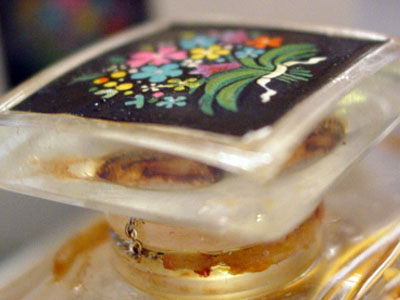 We Cuban women invented alternative cosmetics: cream deodorant mixed with grated color chalk to make eye shadow, shoe polish as eye mascara, yellow soap with oxygenated water to dye the hair lighter or carbon extracted from old batteries to make it darker, detergent instead of shampoo and “Alusil,” an antacid I think, was used as gel for the hair. My first makeup came from a professional water-color set. For an age in which image is everything, any resource was welcomed.
We Cuban women invented alternative cosmetics: cream deodorant mixed with grated color chalk to make eye shadow, shoe polish as eye mascara, yellow soap with oxygenated water to dye the hair lighter or carbon extracted from old batteries to make it darker, detergent instead of shampoo and “Alusil,” an antacid I think, was used as gel for the hair. My first makeup came from a professional water-color set. For an age in which image is everything, any resource was welcomed.
What we couldn’t invent was perfume. As a girl, I loved my mom’s fragrance, the smell in her closet and drawers. It was Fleur de Rocaille de Caron, the last bottle she bought at a beautiful store (La Havana Antigua) which was at Hotel Havana Libre in the early 70’s and when the perfume was gone, my mom took off the top, which was designed with a flower bouquet, and the smell inside her drawer for intimates stayed in her closet and is still in my memory as a smell of “beyond death”.
No matter how badly we wanted, no one or almost no one was again able to come up with a perfume; a good essence was outside the realm of any computation, even the cheap colognes disappeared, which it didn’t matter between so many uniforms and the continuous agricultural labor mobilizations.
Perfumes exercise an inevitable attraction over me. I believe I could have been a good “nose” for the perfume industry; also helpful is my semi-Quevedian nose. It often frustrates me to celebrate a perfume, ask for the name and the answer is something like,”I don’t know, is a long bottle with a blue top.” I never understood how such an important accessory could be taken so lightly.
When I had perfume, it was Red Moscow. I didn’t like it but I couldn’t choose. I envied my sister’s skin, with a spectacular chemistry that would smell almost French when it was just Russian. Maybe those perfumes were not that bad, but they had something cloying that I didn’t like.
If I had an important outing, I would steal from my mom a small touch of Air du Temps by Nina Ricci that my uncle had brought her from a trip to Europe. Later, my brother Miguel started working at CAME and from Hungary he brought me Charlie by Revlon, a fragrance known in Cuba as the “perfume of the Community”, and I suppose that it was a pioneer scent in the US perfume industry which was well placed in a market where France reigned indisputably.
One third of the allowance from my first foreign trip in 1979 was spent on Fidgi by Guy Laroche, the first perfume chosen by me among many to choose from. On that same trip, I bought for everyday use Astric, a scent from Germany that I remember with much love, which I suppose is as lost as that Germany.
Throughout the years I have had other good perfumes, but they have been gifts; now they are sold in foreign exchange stores but they don’t even offer a sample to smell. The same classic French and the Calvin Klein, DKNY, Carolina Herrera and company are so expensive that you have to first buy soap, shampoo and deodorants manufactured by Suchel, a lot more necessary at this point in my life than a brand-name perfume.
Translated by LYD
28 October 2013
Cuban Dissidents Reported More than 900 Political Arrests in October / Diario de Cuba
 Havana, Agencies, 1 November 2013 – The Cuban Commission for Human Rights and National Reconciliation (CCDHRN) reported Friday that during the month of October there were 909 “politically motivated arbitrary arrests” on the island and warned of a clear trend of increasing repression throughout 2013, EFE reported.
Havana, Agencies, 1 November 2013 – The Cuban Commission for Human Rights and National Reconciliation (CCDHRN) reported Friday that during the month of October there were 909 “politically motivated arbitrary arrests” on the island and warned of a clear trend of increasing repression throughout 2013, EFE reported.
In its monthly report on repression in Cuba, the group led by dissident Elizardo Sanchez said that the number of arrests of October is one of the highest for a month in the past two decades.
The CCDHRN further reported that there was an “unacceptable and unjustified increase” of police violence and “para-police” violence, referring to the so-called “rapid response brigades,” as well as “sometimes covert brutal physical assaults against peaceful dissidents.”
“We continue to suffer from high levels of political and social repression in parallel with the worsening economic situation, increased poverty and the hopelessness of the majority who struggle to survive on an average monthly salary of less than $20, one of the lowest in the world,” says the opposition group.
The CCDHRN hold Cuba’s “top leadership” responsible for this “spiral of repressive violence” along with “the heads of the powerful bodies of political repression and intimidation, guilty of true hate crimes committed under the guise of protecting national security and the public order,” the organization said in its report.
From DiariodeCuba.com, 1 November 2013
Cuba Aspires to Create Their Own Twitter / Daniel Benitez
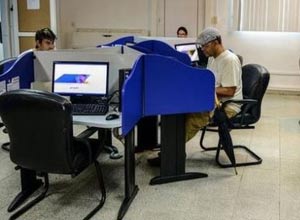
With the goal of expanding access and governmental control of social networks, computer scientists are working to create a microblogging service, modeled after Twitter, for Cuban nationals on the network .cu
According to Kirenia Fagundo, named as leader of the project CubaVa, “Pitazo” is the name of this cyber initiative which will allow network users to exchange short phrases, individual images, or video links.
The information was disclosed by the official Cuban Agency for News and Information and is in keeping with efforts the Island has undertaken to present an image of openness toward internet use and social networks.
Since last June, a total of 118 internet locations are available throughout the country for public access to the internet with the aim of expanding the number of service locations and hours. However, these operations continue to be controlled by the State monopoly ETECSA and the Minister of Information and Communications (MIC) through the server Nauta to which is added the high cost of connecting. The browser with plenty of access to the network costs of 4.50 CUCs per hour.
Numerous Cuban users of Twitter are part of what’s called “the swarm”: those members of the media and official institutions who have integrated themselves using false profiles to carry out the “battle of ideas” on the internet.
Constructing the Store
In addition to Pitazo, the group CubaVa will launch a digital site with the suggestive name El Estanquillo which will apparently post national and international press articles.
In September some Cubans became the first users of a platform of blogs called Reflejos which contains 275 personal pages.
Meanwhile, for the great majority of Cubans, Facebook, Twitter, Instagram and other well-known applications are only news that are difficult to access and at a cost prohibited by their pockets and options.
In a report by the organization Freedom House regarding internet freedom in 2013, Cuban ranks among the worst countries in the world in terms of connectivity and one with immense government regulation.
In Cuba, which has a population of 11.2 million people, 15% are reported connected to the internet according to official statistics. But, this figure includes those who access only email or the State internet system without the ability to freely navigate the internet.
The last report from the National Office of Statistics (ONEI) indicated that in Cuba there are only 74 computers for every 1,000 inhabitants. ETECSA has promised to deliver internet access to Cuban homes in 2014.
From Cafefuerte
October 23, 2013
Translated by: Marlene Temes
The Regime Suspends the Trial of Sonia Garro / Diario de Cuba
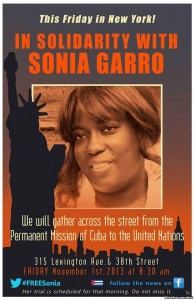 The regime suspended the trial scheduled for this Friday against Lady in White Sonia Garro Alfonso, her husband, the activist Ramón Alejandro Muñoz González, and the dissident Eugenio Hernández Hernández, according to members of the internal opposition in Cuba.
The regime suspended the trial scheduled for this Friday against Lady in White Sonia Garro Alfonso, her husband, the activist Ramón Alejandro Muñoz González, and the dissident Eugenio Hernández Hernández, according to members of the internal opposition in Cuba.
The veteran opponent Vladimiro Roca told DIARIO DE CUBA that he talked to the opponents’ lawyer, Amelia Rodríguez Cala, who confirmed the suspension.
“Sonia Garro’s attorney told me the trial is being postponed,” activist Antonio Rodiles said in his Twitter account.
Roca sid the postponemnet of dissident trials is not unusual. He said as often happens in these cases the court did not elaborate nor set a new date.
Garro Alfonso, Muñoz González y Hernández Hernández are accused of “assault , disorderly conduct and attempted murder.”
The prosecutor asked for 10 years for the Lady in White, 14 for her husband, and 11 for Hernández Hernández.
Speaking to the press, Rodríguez Cala has said the charges against the activists are not legitimate and the sanctions asked for by the prosecutor are “excessively severe.” Roca said the attorney would seek the release of the dissidents.
Yamilet Garro, sister of the Lady in White, told DIARIO DE CUBA that she was able to visit her on Thursday in Guatao prison, where she is being held.
“She’s in good spirits, although very concerned for her daughter,” a teenager, she said.
The trial against the activists was to be held on Friday at 8:30 am in the Diez de Octubre Court in Havana.
The three opponents were arrested in March 2012 in a violent incident in which authorities used special forces and rubber bullets. Sonia Garro was wounded in the leg.
In the year and a half they have been in prison, both Garro and her husband have been the victims of beatings and other punishments by the authorities and common prisoners encouraged by them. Both have been in isolation cells.
On Tuesday Yamilet Garro said her sister suffers from a kidney infection for which she is not receiving medical care. Sonia Garro also suffers from a serious skin infection that has not been cured.
Activists and family members have repeatedly requested, without success, that Amnesty International declare the opponents prisoners of conscience.
From DiariodeCuba
1 November 2013
Absurdities of the Week / Fernando Damaso
Two pieces of news attract my attention these days: Cuba’s draft resolution against imperialist politics to be presented to the UN General Assembly today October 29, and that Cubans is among the top in the world in gender equality.
The first is repeated every year, updating the supposed damages inflicted by the blockade (the embargo) on Cuba. Now, after meticulous mathematical calculations of the various agencies and institutions, which have been published daily in the newspaper Granma, the figure rose to $1,157,327,000. It is striking how well the government economists can calculate the figures for the supposed damages of the blockade (the embargo), and yet have never been capable of calculating the damages from Cuban mis-governance, with the errors, improvisations, voluntarism and failures, that they have inflicted on the country over the last 54 years.
This shifting of the blame to another and laying all the responsibility for our misery entirely on their account is repeated every year. It’s beyond belief!
The second makes me laugh: that the World Economic Forum (WEF) makes this claim, putting Cuba in fifteenth place in gender equality globally among 136 countries evaluated because it has a high percentage of women in its parliament, shows how superficial they are.
The Cuban Parliament is a parliament in name only: all that its male and female deputies do — meeting twice a year for three days — is unanimously approve government decisions that, as a rule, have already been implemented before this formal approval. These deputies have nothing to do with those of other countries and are completely useless, simply members of the chorus.
It would be nice, before making this absurd claim, to ask our women about gender equality. Gentlemen of the WEF, please, a little more seriousness.
29 October 2013
HALLOWEEN / Orlando Luis Pardo Lazo
I remember how my mother in Cuba bent over the jar of hot milk and blew on it, to cool it off for me, making the sounds of an angel.
I remember how my father in Cuba bent over a little yellow slip lined in nylon with the Prayer of San Luis Beltran, every Friday morning.
My childhood was those two gestures, surely unbearable in their time. And now the only thing I have left of Havana in the ‘70s.
Manhattan 2013has a lot of that city. The same neglect, the same feeling of emptiness, the mute multitudes. Everything is parody and allegory. Even, it seems, New York. Even, it seems, so many autumns, which decades ago were still a real station in Cuba.
I close my eyes on the Number 7 train and it’s not hard to see myself on Route 7.
Then I looked at the infant Cuban night and saw those same buildings in New York, were at the height of San Francisco de Paula or San Miguel del Padron. “A microclimate,” said my parents and they shut the window for me.
As a child I was amazed.
I couldn’t know that I was looking at myself dead already in the future, today, on the elevated in Queens, in a third generation Third World.
I thought I wouldn’t grow up. And I was right. Only I grew up.
There is no way to pray realistically in the United States. God is money.
I am absolutely abandoned.
I am on the point of being happy.
31 October 2013
The Embargo / Lilianne Ruiz / Lilianne Ruíz
The first 100 yards toward Avenue 26 is defined by the neighborhood bakery. The eternal line of neighbors with their little nylon bags and ration books, waiting for the five centavo bread, sour and with the texture of cement. Most of the time they come out unhappy, laughing at their misfortunes. Why they laugh at what insults them, I don’t know. To stay calm? Many of them haven’t eaten breakfast in a long time, not even a cup of coffee, nor a slice of palatable bread. Their lives are elsewhere. I don’t know where their lives could be.
Following the road to 26th Avenue. The panorama changes in the Kholy neighborhood. The houses, which before 1959, belonged to comfortable families, not have modern cars in front with olive green license plates. When these people restore their houses, they really do it. With an abundance of materials and brigades of bricklayers from some State ministry.
Not like those people in the little house at 216 Tulipan — where you come to walking in the other direction — who put some wooden boards and a cement-fiber ceiling in one of the roofless rooms in the old mansion, with the risk it will fall in on them, and three generations live there who don’t know what breakfast is. Do at least the children under 7 eat breakfast? It hurts to ask the question and not be able to do anything. The grandfather told me that if someone, from charity, gave him some old shoes, he would prefer to sell them to kill the family’s hunger.
It’s the worst lie. Because socialist governments, where the State is the ruler to the ultimate family corner (with the story of free education they shape the conscience of our children) they sell themselves as givers of social justice. And it is precisely this condition as “providers,” as “deliverers of benefits,” without respect for individual rights, which makes them the worst enemies of freedom, of happiness.
The cause of the poverty of the neighbors at 14 Tulipan — who are like the majority of the Cuban people — and the immoral prosperity of the olive-green thieves of the Kholy neighborhood, is not the American embargo. The Island’s government says it is Cuban but is only Castro and is not disposed to listen to the Cuban people’s demands for freedom, without sending their repressive commandos from Section 21, who beat “scientifically” — enough to do damage without leaving too many traces nor causing too much of a scandal — or they send their rented populist mobs in their ignorance or ill will.
31 October 2013
Cuba Imports Rice it Could Produce / Osmar Laffita Rojas
 HAVANA, Cuba, October www.cubanet.org – Of the approximately 770,000 tons of rice consumed by the Cuban population last year*, 440,000 were imported from Vietnam, Brazil and the United States. As a ton of rice trades on the world market at $450, the Cuban government had to spend $200 million for the purchase of this food.
HAVANA, Cuba, October www.cubanet.org – Of the approximately 770,000 tons of rice consumed by the Cuban population last year*, 440,000 were imported from Vietnam, Brazil and the United States. As a ton of rice trades on the world market at $450, the Cuban government had to spend $200 million for the purchase of this food.
Two years ago, rice production was going through a severe crisis in Cuba. There were great difficulties in the harvest due to the advanced deterioration of agricultural machinery, lack of means to transport the grain and the total abandonment of the roads. Inability to harvest the rice at full maturity is a source of great losses.
There were few dryers, mills, silos and warehouses, and the vast majority were in pitiful condition, unmaintained for years. With limited industrial capacity and storage, some provinces were forced to send the harvested grain to other provinces that had dryers and mills for processing, thus incurring costs for fuel, wages, etc.
This situation resulted in low yields that did not meet the needs of the population. The deficit in rice production was offset by foreign imports.
But as of mid-2011, the Ministry of Agriculture launched an investment and retrofitting process to reverse the situation. The state allocated substantial resources for the purchase of agricultural machinery and means of transporting the grain. It embarked on a process of building new kilns, mills, silos and warehouses, while the existing facilities are being repaired and modernized.
Similarly, it undertook the rehabilitation of irrigation channels and roads.
Take the case of the new Guama River diversion in Pinar del Rio, which, with El Punto Dam in the town of Consolación del Sur, ensures irrigation of the Vuelta Abajo rice plantation through a more than 12-mile system of channels.
Since last year, the cultivation of rice in Cuba has undergone positive changes. The provinces of Pinar del Rio, Villa Clara and Cienfuegos reported 86,000 acres harvested in cold and spring sowings. Timely delivery of fertilizer, herbicides, fuel, more efficient water use, among other assurances made it possible for these three provinces to report a production of 42,000 tons of wet rice this year, which represents an increase of 35% relative to what was reaped by those provinces the previous year.
In Villa Clara a mill has been built that will process 220 tons of rice a day, and three silos were built, each with with a 1,100 ton capacity, plus a warehouse with a capacity of 1,980 tons. With these investments, by next year the province may end a daily transfer of 275 tons of wet rice to Sancti Spiritus and Matanzas for industrial processing.
But not everything is going smoothly. In Los Palacios in Pinar del Rio Province, the Air Services Company’s failure to meet its commitments in rice planting, along with the delay in the application of fertilizers, herbicides and insecticides, caused severe damages to this year’s production. Rice production was down 43,700 tons and there was a significant decrease in yields per acre.
The agricultural aviation executives argue that their priority is not the rice companies, but spraying against mosquitoes in Havana, in the tourist resorts of Cayo Coco and Cayo Largo, and in the city of Pinar del Rio.
Osmar Laffita Rojas, ramsetgandhi@yahoo.com
*Translator’s note: Roughly 140 pounds per person
Cubanet, 31 October 2013
Yoani Sanchez Says Google and Twitter Protect Cubans’ Freedom of Expression / Cubanet

Senior executives from Google and Twitter promised Cuban blogger Yoani Sánchez that they would technological tools to protect the freedom of expression of Cuban civil society.
The author of the blog Generation Y, in an interview with martinoticias.com, said that with her visit to Silicon Valley in California she established serious conversations with these social media giants regarding the need for protection of Cuban activists.
Twitter Representatives agreed to provide resources to detect fake profiles used by people in the service of the Cuban government to discredit and threaten independent journalists living in Cuba.
During a meeting with students and professors at the University of Miami, Sanchez spoke about the elements that characterize the current Cuban civil society and the impact of technology as a force for change to awaken youth and the Cuban population general from their apathy.
For Sanchez, technology is a unifying element that will help the Cuban people to lose their fear of the Castro regime. Her plan to create a digital newspaper aims to contribute to this.
With regards to that publication she said that there are 8 journalists preparing every detail of the launch, so this will be “a newspaper of the 21st century.” So that it can circulate in a printed edition in Cuba, it will be available on the site in a pdf version.
For young people at the University of Miami, who have studied Yoani Sánchez’s work in class, it was particularly interesting to see the positive spirit this communicator maintains, in the face of daily obstacles in Cuba.
The blogger, who has over 526,000 followers on her Twitter account, is considered a pioneer in the use of new technologies in Cuba.
Cubanet, 30 October 2013
“In 2020 we will have street lighting” / Gladys Linares

HAVANA, Cuba, October, www.cubanet.org — At the end of the ‘80s a neighbor whose name escapes me stuck a sign on his bike basket that said: “Friend of Perestroika.” One day I heard they had searched his house and taken him prisoner. That caused a lot of talk among the neighbors, because he was a Communist Revolutionary. That was the first time I’d heard of perestroika.
Also at that time a colleague of my husband, who had studied in the USSR and returned home with a Russian wife, spoke with great enthusiasm about the reforms, perestroika and glasnost. Because of this he had problems with the political police and lost his job. Later we didn’t know how that managed to get out of the country.
It was hard to get news about those events. Soviet magazines such as Sputnik, which might have information about them, stopped circulating. On the other hand, a great number of Cuban students and workers who were in the USSR didn’t return home for fear of being controlled by State Security, which tried to avoid, at all costs, the expansion of these new ideas. Many of them stayed in Europe later managed to settle in the United States. They were called “red worms.”
As these transformations occurred in the USSR, relations between the Cuban government and the socialist camp were deteriorating. With the fall of the Berlin Wall, at the end of 1989, most Cubans were excited because we were so eager for political change.
In those days, the opposition was growing, and taking off from the disappearance of Communism in Eastern Europe, engaged in a strategy of peaceful struggle to eliminate Communism in Cuba and to establish a democratic society with a market economy.
For more than twenty years, the Cuban people have confronted an economic and moral crisis. Despite this, it is very important to see how new generations look at the future from a different perspective, and are no longer silent about what they think.
With respect to this, the economist and opponent wrote, “The transition that is already taking place is the most important one, that is, in the hearts and minds of Cubans, frustrated and disillusioned with so many broken promises.”
A few days ago, a friend told me: “I’m not psychic, and predicting the date of change is difficult, but it is good to set short-term goals. That’s what encourages us to move forward and not lose momentum, so I like to imagine that by 2020 this dictatorship will be over.”

After thinking a bit, she continues, “When that happens, we will not have to steal to eat because our wages will be enough to live decently. We will travel along well-maintained streets, and at night we won’t have to be afraid to go out because they will be lit. The transportation problems will be resolved, perhaps with trains or, why not, with electric trams, that will circulate round the cities.
“I’ll take a stroll around the shops,” she adds, “which will have nice things in beautifully decorated windows. There will always be sales that the poor can take advantage of, and we will even be able to buy with easy payment. The houses and buildings and will be repaired and painted, and Havana will be even more beautiful than before 1959.
“In 2020 we will be better off than now, because anything is better than this. From time to time there will be real elections where we elect the president from among several candidates from different parties.
“My son, who lives in Miami, will come to see me more often, and, as in the past, we will have good relations with the U.S., where a large part of the Cuban people live. Some will come back and some wont.” She concludes, “Change will not be easy, but we will achieve it, and we will be here to see it.”
By Gladys Linares
From Cubanet, 30 October 2013







